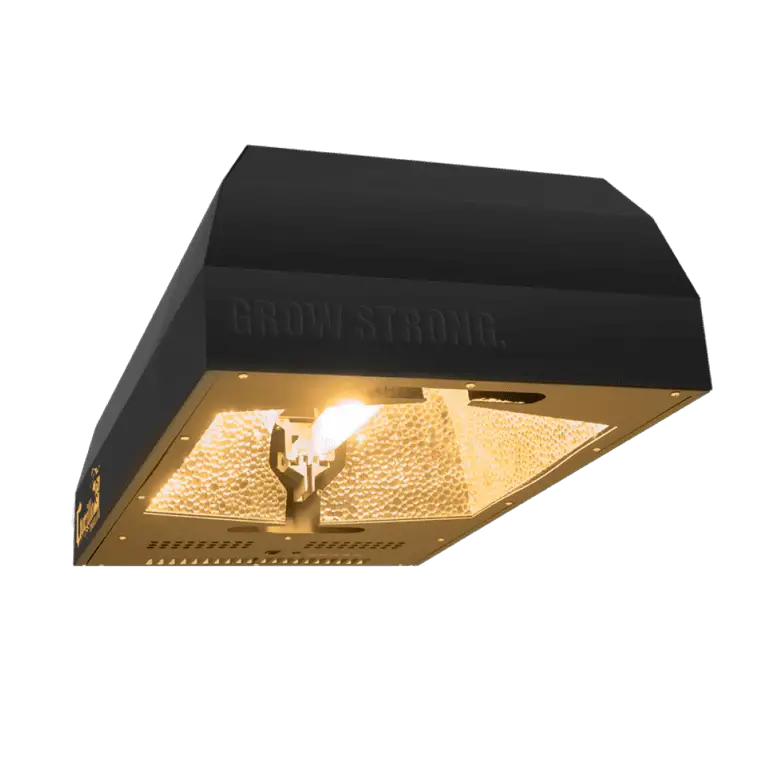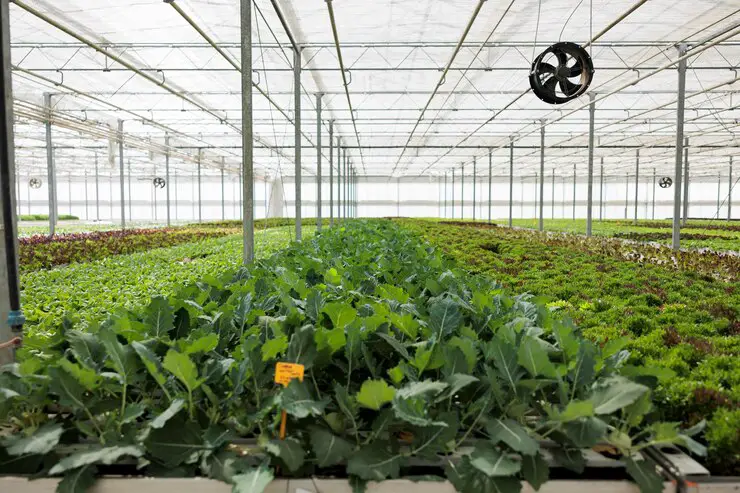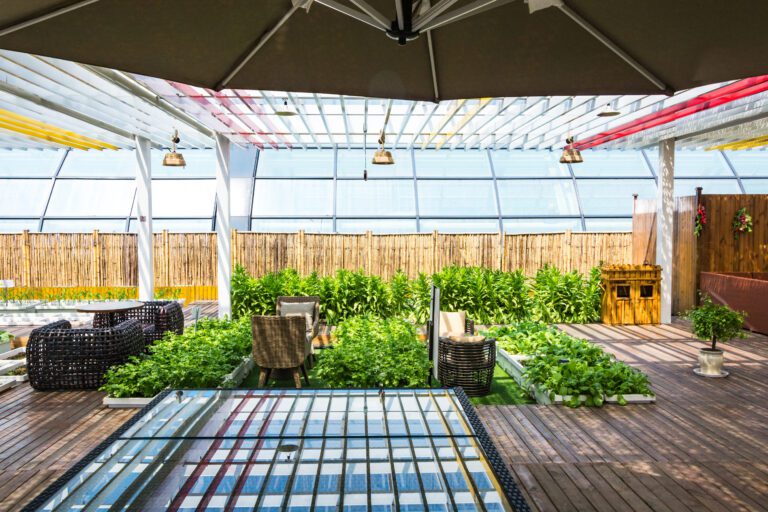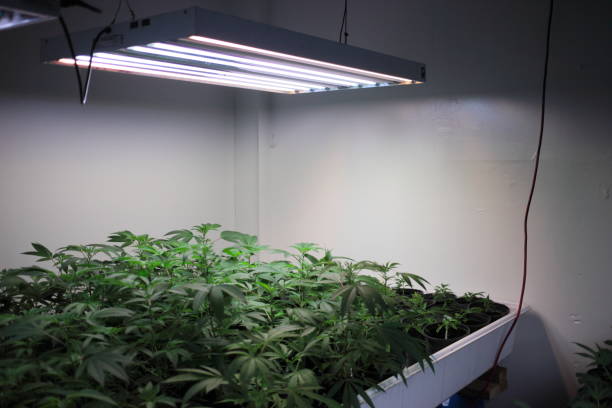Grow Room Automation: How to Use Smart Devices to Automate and Oversee Your Grow Room
Table of Contents
The Benefits of Smart Devices in Grow Room Automation
Smart devices offer a wide range of benefits when it comes to automating your grow room. One of the key advantages is the ability to monitor and control various environmental factors with precision. Temperature and humidity, for example, play a crucial role in plant growth and can greatly impact yields. With smart devices, you can easily set and maintain optimal settings, ensuring that your plants thrive in the ideal conditions. Additionally, smart devices can also help you save time and effort by automating tasks such as lighting and irrigation. By programming these devices to operate at specific intervals, you can ensure that your plants receive the right amount of light and water without the need for constant manual adjustments.
Furthermore, smart devices offer the convenience of remote monitoring and control. With the use of smartphone apps or computer software, you can easily access and manage your grow room from anywhere, at any time. This is especially beneficial for those who may need to travel or be away from their grow room for extended periods. Additionally, smart devices can provide real-time data and alerts, allowing you to quickly respond to any issues or abnormalities in your grow room. This proactive approach not only helps prevent potential problems but also allows for timely intervention, minimizing the risk of yield loss. With all these benefits combined, it’s no wonder that more and more growers are turning to smart devices for efficient and effective grow room automation.
Certainly! Let’s delve into the benefits of using smart devices in grow room automation. These advanced technologies offer significant advantages for indoor cultivation:
| Benefit | Description |
|---|---|
| Remote Monitoring and Control | Smart devices allow you to monitor and adjust growing conditions remotely. Whether you’re away from home or simply want to check on your plants, you can access data related to temperature, humidity, CO2 levels, and root zone health using your mobile device. |
| Labor Reduction | By automating tasks such as turning fans or lights on/off, you reduce the need for manual labor. This frees up your time and ensures consistent operation without constant supervision. |
| Energy Efficiency | Smart systems optimize equipment usage by ensuring that lights, fans, and other devices operate at optimal levels and correct times. This leads to lower utility bills and a more sustainable setup. |
| Precision Environment Control | With smart devices, you can create an optimal growing environment tailored to your plants’ needs. Fine-tune parameters like temperature, humidity, and CO2 content, resulting in improved yields and higher crop quality. |
Embracing smart technology in your grow room not only streamlines operations but also enhances overall productivity.
Understanding the Basics of Grow Room Automation
Grow room automation is revolutionizing the way we cultivate plants by providing efficient and precise control over various environmental factors. By utilizing smart devices, growers can automate tasks such as temperature and humidity control, lighting systems, irrigation, nutrient monitoring, and pest detection. With the help of these devices, growers can create an optimal environment for their plants to thrive.
One of the fundamental aspects of grow room automation is the use of sensors. These sensors play a vital role in detecting and measuring important parameters such as temperature, humidity, CO2 levels, and nutrient concentrations. By collecting real-time data, smart devices can make necessary adjustments to maintain the ideal conditions for plant growth. For example, if the temperature in the grow room exceeds the desired range, the smart device can automatically activate cooling systems or adjust ventilation to bring it back to the optimal level. Similarly, if the humidity levels are too high, the device can trigger dehumidifiers or adjust the irrigation system to prevent mold and mildew growth. Overall, the integration of smart devices and sensors in grow room automation helps growers maintain a consistent and controlled environment, ensuring optimal plant health and yield.
Selecting the Right Smart Devices for Your Grow Room
When selecting the right smart devices for your grow room, it is crucial to consider several factors that will contribute to the overall success of your automation system. First and foremost, prioritize devices that are specifically designed for horticultural use. These devices are built with the necessary features and capabilities to effectively monitor and control the unique conditions within a grow room environment. Look for devices that offer accurate sensors for measuring temperature, humidity, light levels, and nutrient levels. Additionally, make sure the devices have the capacity to connect to a central hub or controller for seamless integration and management.
Another important consideration is the compatibility of the smart devices with your existing infrastructure and automation system. Ensure that the devices you choose can easily connect and sync with other devices and software in your grow room. This will enable you to streamline your operations and maximize the efficiency of your automation system. Additionally, it is beneficial to select devices that have a user-friendly interface and intuitive controls. This will simplify the setup and installation process, allowing you to quickly get your automation system up and running. Take the time to research and compare different smart devices, read user reviews and testimonials, and consult with experts in the field to make informed decisions and select the best devices that suit your specific needs and requirements.
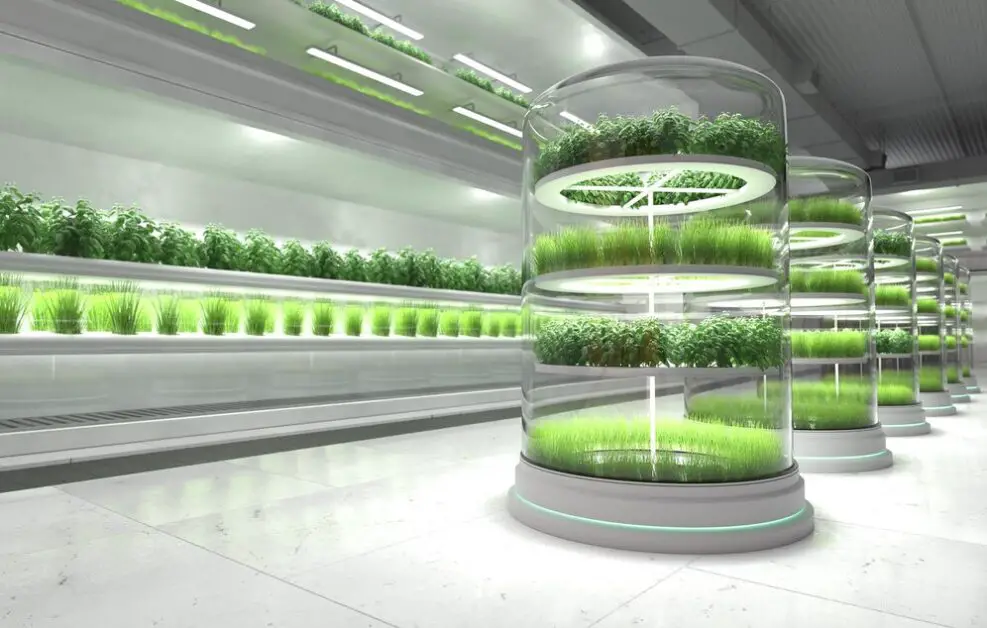
Setting Up and Installing Smart Devices in Your Grow Room
When it comes to setting up and installing smart devices in your grow room, there are a few important steps to follow to ensure a successful implementation. First, you’ll want to determine the specific needs and goals of your grow room automation. Are you primarily focused on temperature and humidity control, or do you also want to optimize your lighting and irrigation systems? Identifying your priorities will help you select the right smart devices for your setup.
Once you’ve chosen the appropriate devices, it’s time to physically install them in your grow room. This may involve mounting sensors, connecting controllers, and configuring the devices to communicate with each other. It’s crucial to carefully read and follow the manufacturer’s instructions during this process to avoid any errors or damage. Additionally, ensure that all devices are properly connected to a reliable power source and that they are securely mounted or placed in an ideal position for accurate readings and control. Proper installation is essential for maximizing the effectiveness of your smart device automation system.
Certainly! Let’s discuss the steps for setting up and installing smart devices in your grow room. These devices can significantly enhance your indoor cultivation process. Below, I’ve outlined the key steps:
| Step | Description |
|---|---|
| 1. Assess Your Needs | Begin by understanding your specific requirements. Identify the devices you want to automate, such as lights, fans, temperature control, and irrigation systems. |
| 2. Choose Smart Devices | Research and select smart devices suitable for your grow room. Examples include smart LED grow lights, climate controllers, humidity sensors, and smart plugs. |
| 3. Install Smart Grow Lights | If you’re using smart LED grow lights, follow the manufacturer’s instructions for installation. Ensure proper positioning and adjust the light spectrum as needed for different growth stages. |
| 4. Set Up Climate Control | Install a smart climate controller (such as the VIVOSUN GrowHub Controller) to manage temperature, humidity, and CO2 levels. Connect it to your smart devices and configure optimal settings. |
| 5. Position Sensors | Place temperature and humidity sensors strategically within your grow room. These sensors provide real-time data for precise adjustments. |
| 6. Connect to Smart Hub | Use a central hub (like the VIVOSUN GrowHub Controller) to integrate all your smart devices. Connect the hub to your Wi-Fi network and pair it with the corresponding app. |
| 7. Configure Automation Rules | Set up automation rules based on your plants’ needs. For example, schedule lights to mimic natural daylight cycles and adjust fan speed based on temperature. |
| 8. Monitor Remotely | Download the associated app and link it to your hub. Now you can monitor and control your grow room remotely using your smartphone or tablet. |
| 9. Test and Fine-Tune | Run tests to ensure everything works as expected. Adjust settings as needed to optimize plant growth and energy efficiency. |
| 10. Regular Maintenance | Regularly check and maintain your smart devices. Replace sensors if necessary and keep the system updated. |
Remember that smart devices offer convenience, energy savings, and precision, but proper setup and ongoing management are crucial for success.
How to Connect and Sync Smart Devices for Seamless Automation
Connecting and syncing smart devices for seamless automation in your grow room is a crucial step in maximizing the benefits of this cutting-edge technology. By following a few simple steps, you can ensure that your devices are properly connected and synced, allowing for effortless control and monitoring of your grow room environment.
The first step is to ensure that you have a stable and reliable Wi-Fi connection in your grow room. This will provide the necessary connectivity for your smart devices to communicate with each other and with your control interface. Make sure that your Wi-Fi router is within range of your grow room and that it is operating on a non-interfering channel for optimal performance.
Next, you will need to connect each of your smart devices to your Wi-Fi network. This can typically be done through the device’s companion app, which will guide you through the setup process. Make sure to follow the manufacturer’s instructions carefully to ensure a successful connection. Once connected, you can verify the connection by checking the status of each device in the app.
Once your devices are connected to the Wi-Fi network, you can proceed with syncing them together for seamless automation. Most smart devices utilize a central control interface, such as a hub or a controller, to coordinate their actions. Follow the instructions provided by the manufacturer to pair your devices with the control interface. This will enable the devices to work together harmoniously and respond to your commands accurately.
By properly connecting and syncing your smart devices, you will be able to take full advantage of their capabilities in automating your grow room. With a stable Wi-Fi connection and careful adherence to manufacturer instructions, you can create a seamlessly integrated system that provides effortless control and monitoring of your grow room environment. So, let’s get started and bring the power of automation to your gardening journey.
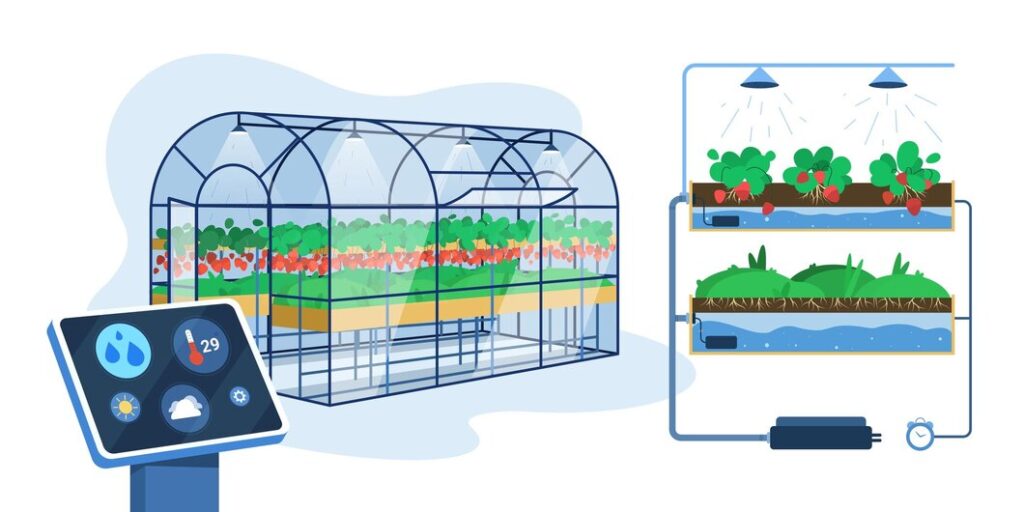
Utilizing Smart Devices for Temperature and Humidity Control in Your Grow Room
Temperature and humidity control play a crucial role in maintaining optimal growing conditions for your plants in a grow room. By utilizing smart devices, you can ensure that these factors are consistently monitored and adjusted as needed. Smart thermometers and hygrometers are capable of providing real-time data on temperature and humidity levels, allowing you to make informed decisions about climate control.
With smart devices, you can program and automate temperature and humidity settings based on the specific needs of your plants. For example, different plant species may thrive in different temperature and humidity ranges. By utilizing smart devices, you can easily create custom temperature and humidity profiles for various stages of growth, ensuring that your plants receive the ideal conditions at all times. Furthermore, smart devices can even be connected to your HVAC or misting systems, allowing for seamless control and adjustment of temperature and humidity levels.
Maintaining optimal temperature and humidity levels in your grow room is vital for promoting healthy plant growth and preventing issues like mold, mildew, and nutrient deficiencies. With the help of smart devices, you can effortlessly monitor and control these factors, ensuring that your plants thrive in the best possible environment.
Optimizing Lighting and Irrigation Systems with Smart Devices
Optimizing lighting and irrigation systems in your grow room is essential for achieving maximum plant growth and yield. With the help of smart devices, you can efficiently monitor and control these crucial parameters to create the ideal growing conditions for your plants.
Smart lighting systems are designed to provide the right spectrum and intensity of light at each stage of plant growth. By utilizing sensors and timers, these devices can mimic natural sunlight and adjust the light levels accordingly. This precise control not only promotes healthy plant growth but also saves energy by ensuring that lights are only on when necessary. Additionally, some smart lighting systems are equipped with features such as dimming and color variation, allowing growers to tailor the lighting conditions to specific plant species or growth phases.
In addition to optimizing lighting, smart devices can also enhance the efficiency of your irrigation system. By integrating moisture sensors, these devices can accurately measure soil moisture levels and automate the watering process accordingly. This prevents over or underwatering, which can lead to nutrient imbalances, root rot, or plant stress. Moreover, smart irrigation systems often provide features like customizable watering schedules, remote control via mobile apps, and water usage tracking, allowing growers to fine-tune their watering practices and conserve water resources.
By harnessing the power of smart devices to optimize lighting and irrigation systems in your grow room, you can create a highly controlled environment that maximizes plant growth while minimizing waste. The precise control, energy efficiency, and automation capabilities of these devices not only simplify the grower’s tasks but also contribute to sustainable and cost-effective cultivation practices. So, if you’re aiming for robust and healthy plants, investing in smart devices for lighting and irrigation optimization is undoubtedly a wise decision.
Monitoring and Controlling Nutrient Levels with Smart Devices
Monitoring and controlling nutrient levels is a crucial aspect of successful cultivation in a grow room. Smart devices have revolutionized this process, allowing gardeners to achieve optimal nutrient management with precision and ease. These devices, equipped with advanced sensors and algorithms, provide real-time data on nutrient levels, ensuring plants receive the perfect balance of essential elements for healthy growth.
By utilizing smart devices, gardeners can closely monitor the nutrient concentrations in their hydroponic systems or soil, helping them make informed decisions about nutrient supplementation. These devices can measure important parameters such as pH, electrical conductivity (EC), and nutrient concentrations, providing accurate readings that enable precise adjustments. With this level of control, gardeners can fine-tune nutrient levels and maintain optimal conditions for plant growth, maximizing yield and quality.
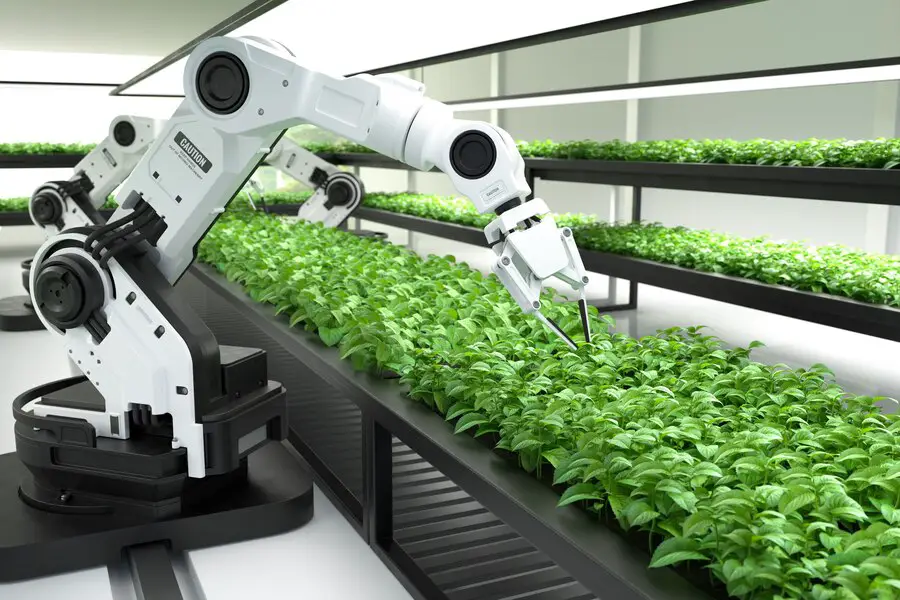
Additionally, smart devices often offer automation features, allowing gardeners to set up custom nutrient dosing schedules based on crop type, growth stage, and specific requirements. This automation saves precious time and effort, as the devices can automatically adjust nutrient levels based on predetermined settings. Ultimately, monitoring and controlling nutrient levels with smart devices empowers gardeners to optimize their nutrient management strategies, leading to healthier plants, improved yield, and overall successful cultivation.
Using Smart Devices for Pest and Disease Detection and Prevention
Pest and disease detection and prevention are crucial aspects of successful plant cultivation, and smart devices can play a significant role in ensuring a healthy and thriving grow room environment. With the advancement in technology, smart devices equipped with sensors and artificial intelligence algorithms can effectively monitor and detect potential pest and disease outbreaks, providing real-time data and alerts to gardeners.
One of the key advantages of using smart devices for pest and disease detection is their ability to continuously monitor various environmental factors that can contribute to the growth and spread of pests and diseases. These devices can measure parameters such as temperature, humidity, air quality, and moisture levels, which are essential for the optimal health and growth of plants. By analyzing this data, smart devices can identify anomalies and patterns that may indicate the presence of pests or diseases before they become visible to the naked eye.
Furthermore, smart devices can notify gardeners immediately when abnormal conditions are detected, allowing for prompt action and preventing potential damage to the entire crop. For example, if a sudden increase in humidity is detected, indicating the potential onset of a fungal infection, the smart device can send an alert to the gardener’s smartphone or computer. This early warning system enables quick intervention, such as adjusting ventilation or adjusting watering practices, to mitigate the risk of disease spread. By leveraging the power of smart devices, gardeners can take proactive measures to protect their plants and maximize crop yields.
Harnessing the Power of Data: Analyzing and Interpreting Smart Device Readings
When it comes to harnessing the power of data in grow room automation, analyzing and interpreting smart device readings is crucial. Smart devices such as sensors and monitors provide valuable information about various aspects of the grow room environment, ranging from temperature and humidity levels to nutrient levels and pest presence. By carefully analyzing and interpreting these readings, growers can gain valuable insights that can help optimize their growing conditions and improve overall crop yield and quality.
One of the key benefits of analyzing smart device readings is the ability to identify patterns and trends over time. By tracking and analyzing data over multiple growing cycles, growers can identify recurring patterns in temperature and humidity fluctuations, nutrient levels, or pest outbreaks. This information can be used to make data-driven decisions on adjustments to lighting, irrigation, nutrient dosing, and pest control measures. By responding to these patterns in a timely manner, growers can proactively address potential issues and optimize their grow room conditions for optimal plant health and growth.
• Analyzing smart device readings allows growers to identify patterns and trends over time.
• Tracking data over multiple growing cycles helps identify recurring patterns in temperature, humidity, nutrient levels, and pest outbreaks.
• Data-driven decisions can be made on adjustments to lighting, irrigation, nutrient dosing, and pest control measures based on these patterns.
• Proactively addressing potential issues based on the analysis of smart device readings optimizes grow room conditions for plant health and growth.
Integrating Smart Devices with Other Automation Systems in Your Grow Room
Integrating smart devices with other automation systems in your grow room can greatly enhance the efficiency and productivity of your gardening endeavors. By seamlessly connecting your smart devices with other automation systems, you can create a harmonious environment that optimizes plant growth and minimizes manual labor.
One key aspect to consider when integrating smart devices with other automation systems is compatibility. Ensure that the smart devices you choose are compatible with the existing automation systems in your grow room. This will allow for smooth integration and seamless communication between devices, enabling you to control and monitor all aspects of your grow room from a single interface. Whether it’s adjusting lighting levels, regulating temperature and humidity, or monitoring nutrient levels, the right combination of smart devices and automation systems can streamline your workflow and simplify the overall management of your grow room.
When it comes to integrating these systems, it is important to follow manufacturer instructions and guidelines. Each smart device may have specific requirements for connectivity and synchronization with other automation systems. By following these instructions carefully, you can ensure that the integration process is successful and avoid any potential issues or malfunctions. Additionally, consider consulting with experts or professionals in the field to gain further insights and guidance on the best practices for integrating smart devices with other automation systems in your grow room.
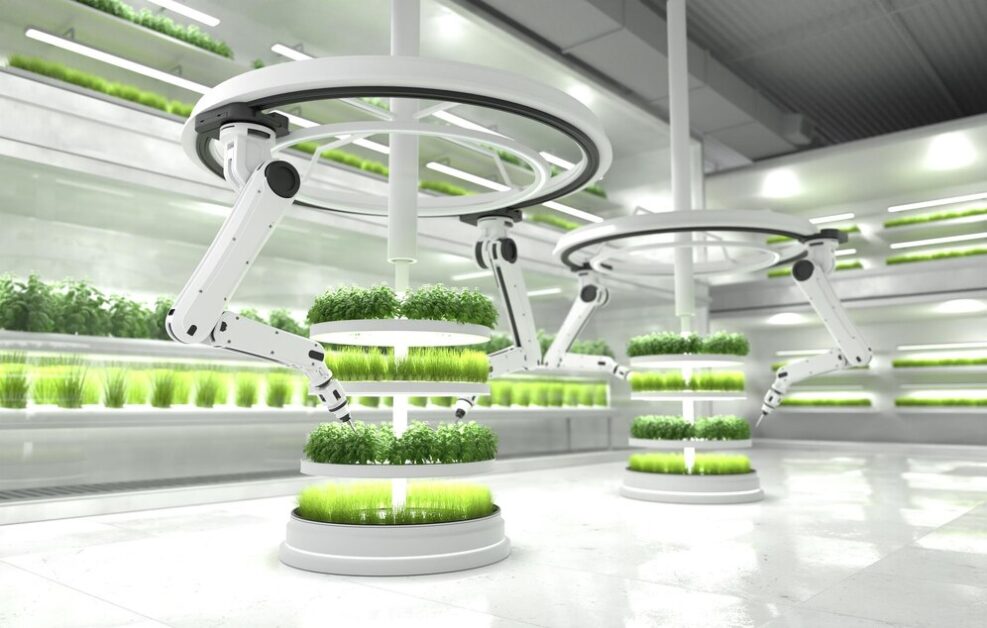
Overall, integrating smart devices with other automation systems in your grow room has the potential to revolutionize the way you approach gardening. With the right combination of compatibility, proper installation, and expert guidance, you can harness the full potential of these technologies to create a truly optimized and efficient grow room environment. Stay tuned for more tips and insights on how to make the most of your smart devices in the context of grow room automation.
Troubleshooting Common Issues with Smart Device Automation in Grow Rooms
One of the common issues that growers may encounter when using smart device automation in their grow rooms is connectivity problems. Smart devices rely on a stable internet connection to communicate with each other and with the user’s smartphone or computer. If there are any Wi-Fi network issues or if the internet service is unreliable, it can disrupt the automation process and lead to inconsistent control of the grow room environment. To troubleshoot this issue, growers should ensure that their Wi-Fi network is strong and that the smart devices are within range. They can also try rebooting their router or contacting their internet service provider for assistance.
Another issue that growers may face is compatibility problems between different smart devices. There are various brands and models of smart devices available in the market, and not all of them may be compatible with each other. This can result in a fragmented automation system where different devices do not work together seamlessly. To avoid this issue, growers should research and select smart devices that are known to be compatible with each other. It is also important to keep the devices’ firmware and software up to date, as manufacturers often release updates that address compatibility issues. If compatibility problems persist, growers may need to replace certain devices or consult with the manufacturers for further guidance.
Best Practices for Maintaining and Upgrading Your Smart Device Automation System.
Maintaining and upgrading your smart device automation system is crucial for ensuring optimal performance and maximizing the benefits of your grow room automation. Here are some best practices to follow:
1. Regular Maintenance: Just like any other electronic system, your smart devices require regular maintenance to keep them in good working condition. This includes cleaning and inspecting the devices for any signs of wear or damage. Additionally, make sure to update the firmware and software of your devices to access the latest features and bug fixes.
2. Monitoring and Calibration: Monitoring the performance of your smart devices is essential for detecting any irregularities or malfunctions. Use the data and readings provided by the devices to assess their performance and adjust settings if necessary. It is also important to calibrate sensors and other measurement tools regularly to ensure accurate readings.
When it comes to upgrading your smart device automation system, consider the following:
1. Research and Compatibility: Before upgrading your system, thoroughly research the latest smart devices available in the market. Evaluate their features, functionality, and compatibility with your existing system. Compatibility is crucial to avoid any issues with integration and communication between the devices.
2. Scalability and Future-proofing: Choose smart devices that offer scalability and future-proofing capabilities. This means selecting devices that can accommodate the growth and expansion of your grow room in the future. Look for devices that can integrate seamlessly with additional sensors, controllers, or automation systems as your needs evolve.
By following these best practices, you can ensure the smooth operation and longevity of your smart device automation system. Regular maintenance and strategic upgrades will help you make the most of your grow room automation, resulting in healthier and more productive plants.
Please do watch video!
How often should I upgrade my smart device automation system?
The frequency of upgrading your smart device automation system will depend on various factors such as technological advancements, changes in your grow room setup, and your specific needs. As a general guideline, it is recommended to reassess and consider upgrading your system every 2-3 years to stay up to date with the latest features and improvements.
Can I mix smart devices from different brands in my automation system?
Yes, it is possible to mix smart devices from different brands in your automation system. However, it is important to ensure compatibility between the devices and to check if there are any specific integration requirements or limitations provided by the manufacturers. It is recommended to consult the device manuals or contact customer support for detailed information.
How can I ensure the security of my smart device automation system?
To ensure the security of your smart device automation system, it is important to follow best practices such as regularly updating the firmware or software of your devices, using strong and unique passwords, and enabling two-factor authentication if available. Additionally, you can consider setting up a separate network for your smart devices to isolate them from your main network and limit potential risks.
Is it possible to control my smart device automation system remotely?
Yes, most smart device automation systems offer remote control capabilities. By connecting your automation system to a mobile app or a web-based interface, you can easily monitor and control your grow room settings from anywhere with an internet connection. It is important to ensure that your devices and network are properly secured to prevent unauthorized access.
What is the lifespan of smart devices used in grow room automation?
The lifespan of smart devices used in grow room automation can vary depending on the specific device, its quality, usage patterns, and maintenance. Generally, well-maintained smart devices can last anywhere from 5 to 10 years. However, it is important to regularly check for updates, perform maintenance tasks, and replace any malfunctioning or outdated devices to ensure optimal performance and longevity.
Can I expand my smart device automation system in the future?
Yes, most smart device automation systems are designed to be expandable. You can typically add new devices or components to your existing system as your grow room needs evolve. However, it is important to consider compatibility and integration requirements when expanding your system. Consulting the manufacturer’s guidelines or seeking professional advice can help ensure a smooth expansion process.
Are there any specific maintenance tasks I should perform on my smart devices?
Regular maintenance tasks for smart devices in grow room automation include cleaning the devices, checking for firmware or software updates, inspecting for any physical damages, and replacing batteries if applicable. It is also important to regularly monitor the performance of your devices and address any issues promptly to prevent potential disruptions in your automation system.
Can I use voice commands to control my smart device automation system?
Yes, many smart devices used in grow room automation are compatible with voice assistants such as Amazon Alexa or Google Assistant. By integrating your automation system with these voice assistants, you can control your devices using voice commands, making the operation even more convenient and hands-free.
Are there any specific regulations or certifications for smart devices used in grow room automation?
The regulations and certifications for smart devices used in grow room automation can vary depending on the geographical location and the specific industry standards. It is recommended to research and comply with any relevant regulations or certifications applicable to your region. Additionally, choosing devices from reputable manufacturers who adhere to industry standards can provide added assurance of quality and compliance.
Can I use smart devices from my automation system for other purposes outside of grow room automation?
Depending on the capabilities of your smart devices, it is possible to repurpose them for other automation needs outside of grow room automation. For example, you may be able to use temperature and humidity sensors for monitoring conditions in other areas of your home or workplace. However, it is important to ensure compatibility and consider any limitations or specific requirements for repurposing the devices.

Nicole Burke is a dynamic writer at SouthElMonteHydroponics, fueled by her passion for horticulture and environmental sustainability. Armed with a degree in Environmental Science from a renowned institution, Nicole’s expertise lies in hydroponic gardening, organic farming, and biodiversity conservation. Her insatiable curiosity and love for nature drive her to explore innovative techniques in hydroponics, seeking to revolutionize the way we grow crops in urban environments. Nicole’s writing reflects her deep commitment to promoting eco-conscious practices and fostering a deeper connection between humans and the natural world. Through her engaging storytelling, she inspires others to embrace sustainable living and harness the power of hydroponics for a greener future.

